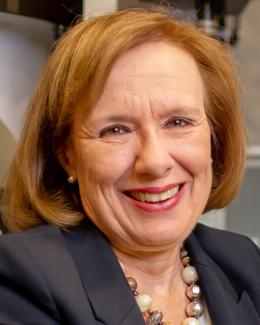
Dr. M. Grace Burke earned her BS in metallurgical engineering from the University of Pittsburgh and a PhD in metallurgy from the Imperial College of Science and Technology in London. Dr. Burke’s career includes 28 years in industry, including 17 years at the Westinghouse Science and Technology Center (WSTC) and the Bettis Atomic Power Laboratory (BAPL), along with 12 years in academia, before coming to ORNL in 2021. She is an industry-recognized scientific leader in the fields of advanced microstructural characterization, including analytical electron microscopy/STEM-EDXS, environmentally assisted cracking, irradiation embrittlement, and the technology of materials for nuclear power applications. Her research interests focus on environment-sensitive behavior of materials, irradiation damage, phase transformations, precipitation, and segregation in steels and Ni-base alloys.
Early in Dr. Burke’s career, she continued her research in structural materials for nuclear power systems and then expanded into irradiation damage and reactor pressure vessel (RPV) embrittlement in the early 1980s. At that time, she began applying correlative characterization including atom probe field-ion microscopy (APFIM) at the U.S. Steel Research Laboratory and continued along with her other materials research programs at WSTC, BAPL, and the University of Manchester, where she is Professor Emeritus. Using APFIM, Dr. Burke was the first to identify the Manganese-Nickel-Copper-Silicon solute-enriched clusters responsible for irradiation embrittlement, reversing the accepted understanding at the time. This finding had a decisive impact on the selection and development of RPV steels going forward for both military and civil nuclear reactors. Her contributions to structural materials development led to her being named as a consultant at BAPL in 2009, making her the first female promoted to the highest rank of scientists at the laboratory. Dr. Burke also received the prestigious George Westinghouse Signature Award in 1996 for her impactful research identifying the mechanism of irradiation-assisted stress corrosion cracking in Ni-base alloys used in pressurized water reactor components.
Dr. Burke became a Corporate Fellow in 2022 in the Materials Science and Technology Division. She has strengthened research in structural alloys by sharing her extensive experience in using advanced analytical electron microscopy and data interpretation. Dr. Burke has been recognized by multiple Department of Energy (DOE) program offices as a leading expert in her field and has been appointed to roles on various panels and committees. Since joining ORNL, she has been asked to assist DOE missions of the Office of Basic Energy Sciences, the Office of Nuclear Energy, and the Office of Fusion Energy Sciences. Dr. Burke also mentors R&D staff and postdoctoral researchers within the directorate.
Dr. Burke continues to serve the scientific community in her leadership roles on scientific advisory boards, panels, and committees for various government labs, programs, and universities. Dr. Burke’s role as the international leader in structural materials degradation research continues to grow with her recent appointments to the DOE Nuclear Science User Facility Scientific Review Board and Science Advisory Committee Chair for the Canadian Center for Electron Microscopy.
Dr. Burke’s achievements have also been widely recognized by her peers through numerous prestigious awards and being named a fellow in six professional societies, including ASM International, the Minerals, Metals & Materials Society, the Institute of Materials, Minerals and Mining, the Microscopy Society of America, the Microanalysis Society, and the Royal Microscopical Society. She is also the first female physical scientist to serve as president of the Royal Microscopical Society.
Dr. Burke continues to enhance materials science and mentoring across the laboratory, elevate ORNL’s external visibility, and aid in formulating an advanced strategy for nuclear and structural materials science research and development in the United States and across the world.

